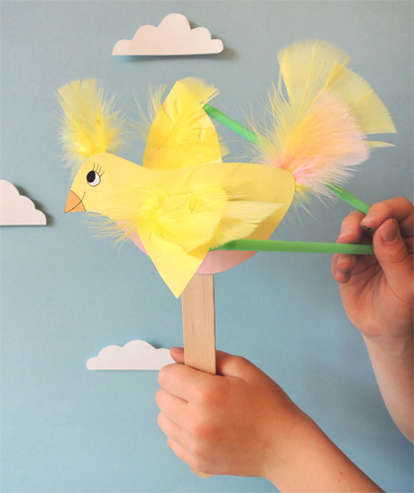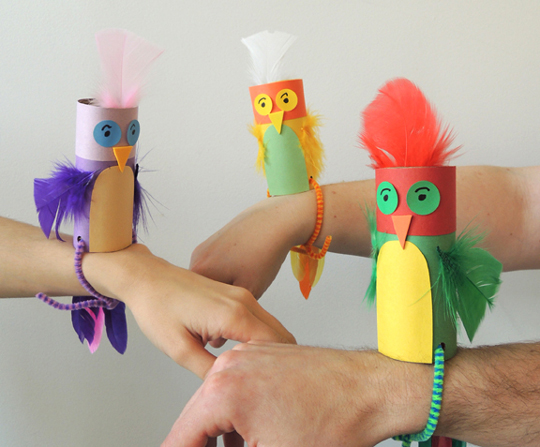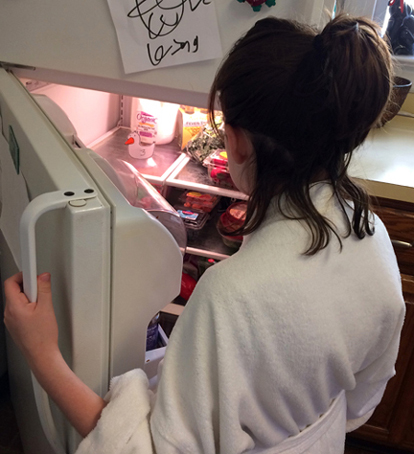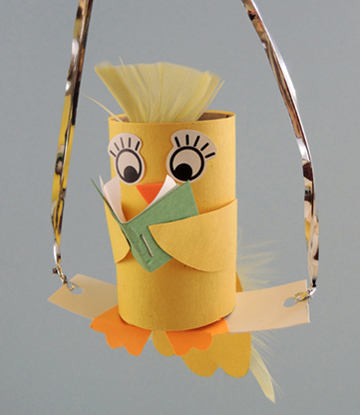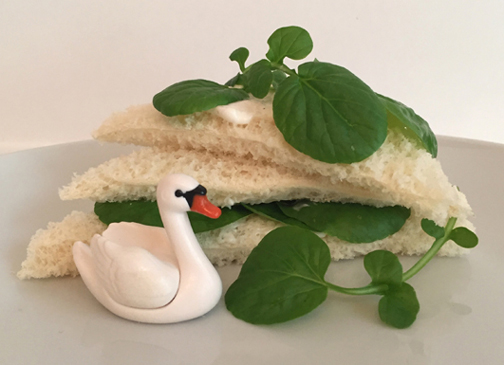
Once upon a quarantine, a father of two decided to haul a plastic ride-on car into the house. The plan was to stick in the shower for a fun and highly distracting “car wash.” But it turned into an epic odyssey of film, photography, set design, costuming, and procuring inflatable orca whales.
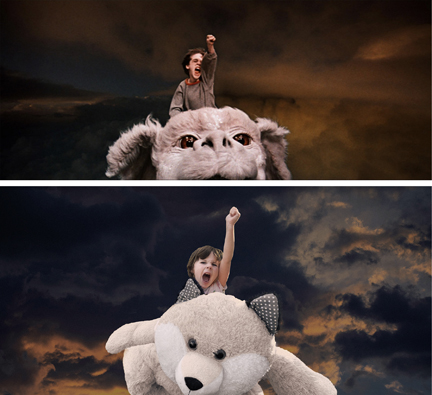 Alex Zane and his 5 year-old daughter Matilda have quite a following on Instagram, posing for kiddie parodies of classic movie scenes. Beginning with Teen Wolf, the pair have explored all genres of film. Oh, and there’s a giant stuffed fox who does cameos as well! I caught up with Alex to ask him about this amazing creative collaboration…
Alex Zane and his 5 year-old daughter Matilda have quite a following on Instagram, posing for kiddie parodies of classic movie scenes. Beginning with Teen Wolf, the pair have explored all genres of film. Oh, and there’s a giant stuffed fox who does cameos as well! I caught up with Alex to ask him about this amazing creative collaboration…
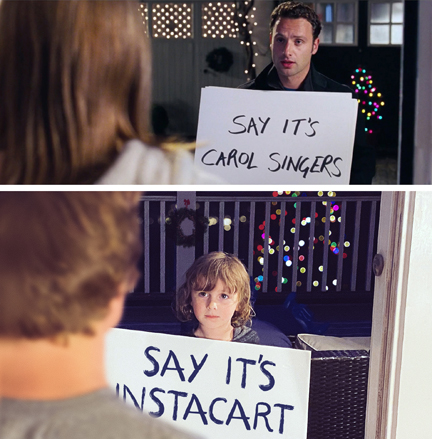 Do you have a background in art and film?
Do you have a background in art and film?
Aside from loving movies forever I have no background in art or film. This project has made me realize how much I missed being creative. I had rarely taken a photograph before all of this (my wife could attest to this).
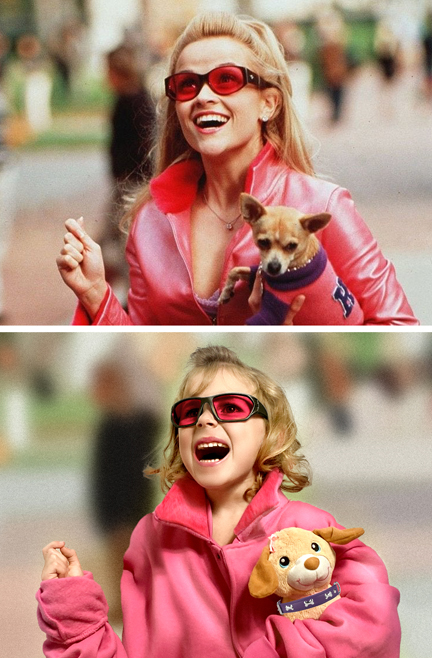 Generally speaking, how long does it take to create a shot?
Generally speaking, how long does it take to create a shot?
The actual clicking of the camera is all of fifteen seconds – we are working with a five year-old so we only have a few seconds before she loses interest in everything and is ripping the wig off. The lead up can take some time though – since I don’t know how to take a photo Andrew [a friend who is a professional photographer] walks me through everything with diagrams and test shots.
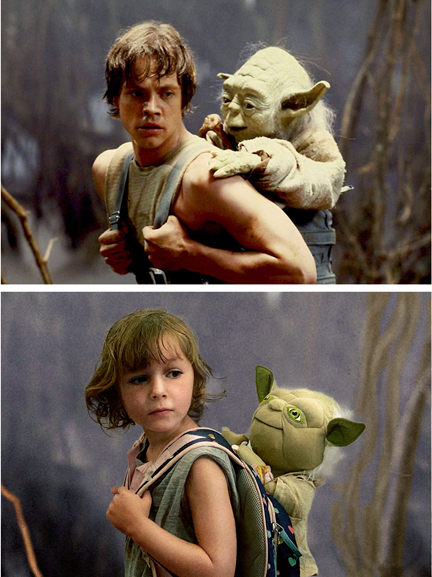 We also have to pick the scene we are going to do and make sure it’s nothing to complex that a brand new photographer and toddler can handle – finally we figure out if we can “kidify” the scene – the Reservoir Dogs with Mr. Potato or the Barbie doll leg in The Graduate were major eureka moments. We spend probably way too much time on this trying to match everything up – my forearm is still burning from holding the stuffed fox up trying to line him up just right with Keanu. I remember thinking, “It’s amazing this is my life.”
We also have to pick the scene we are going to do and make sure it’s nothing to complex that a brand new photographer and toddler can handle – finally we figure out if we can “kidify” the scene – the Reservoir Dogs with Mr. Potato or the Barbie doll leg in The Graduate were major eureka moments. We spend probably way too much time on this trying to match everything up – my forearm is still burning from holding the stuffed fox up trying to line him up just right with Keanu. I remember thinking, “It’s amazing this is my life.”
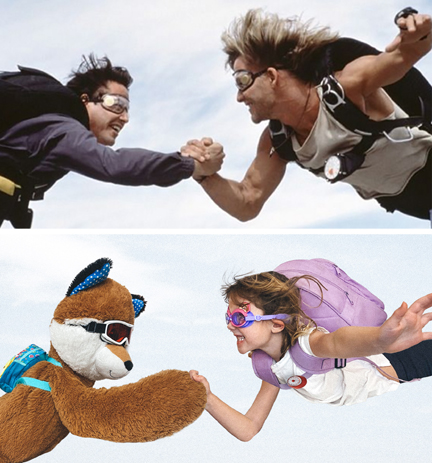 How have your skills changed over the course of your work?
How have your skills changed over the course of your work?
I understand the importance of lighting! And that you can get a kid to wear any kind of wig if the prize is big enough.
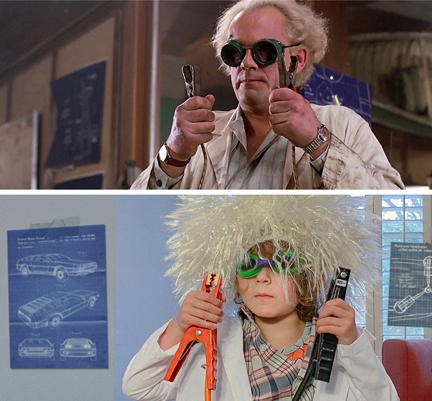 I’ll wager that many of these films haven’t been viewed by your daughter quite yet! Do you explain the scenes to her? Just show her a screen shot? Simply ask her to pose?
I’ll wager that many of these films haven’t been viewed by your daughter quite yet! Do you explain the scenes to her? Just show her a screen shot? Simply ask her to pose?
She always sees a screen shot. She always asks questions centered around “why do they look that way.” I sometimes forget what I tell her but it’s a G-rated summary of any PG-13 and above movie. One time she was showing a cousin some of the photos and I heard her say “That’s about a wizard who took his mouth away …” I had to look over to realize she was telling them about The Matrix. I can’t stress enough that she thinks Silence of the Lambs is about a man who accidentally dropped a quarter down a well…
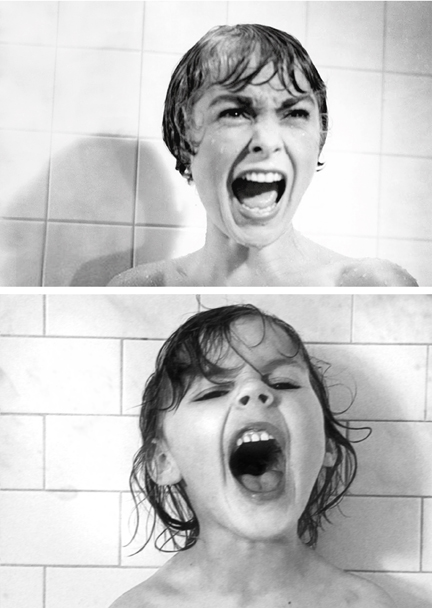 Since you started this venture, what are the TOP THREE weirdest props you’ve purchased?
Since you started this venture, what are the TOP THREE weirdest props you’ve purchased?
I wonder if the FBI has flagged my Amazon account. No, a lot of the props have come from local online yard sales. I will also post on community thread asking for items – a neighbor gave us an old karate outfit we used for Karate Kid. I once posted on an online town group asking for a kid size straight jacket and Hannibal Lecter mask and got immediate responses from people who had the items. I love my town. To answer the question: fur coat (The Royal Tenenbaums) inflatable orca (Free Willy) and plastic gizmo (Gremlins).
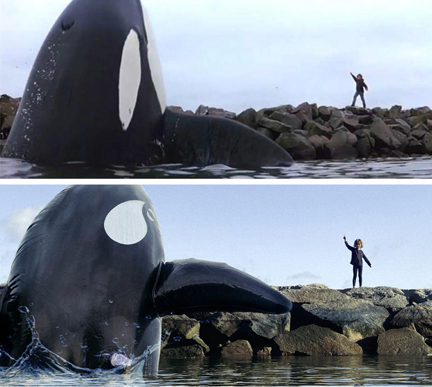 Do you ever show up in a photo as well? To cut to the chase…is that YOU in the inflatable T-Rex costume in the Jurassic Park parody? Please say yes.
Do you ever show up in a photo as well? To cut to the chase…is that YOU in the inflatable T-Rex costume in the Jurassic Park parody? Please say yes.
In the beginning I did – before we started kiddifying the scenes. I’m in the original Good Will Hunting photo. There have been a few failed recreations – I played James Cann in Misery with Matilda mimicking smashing my ankles. No, I have no memory how I described that scene to her. It’s not me in that T-Rex costume! It’s Sam Neil.
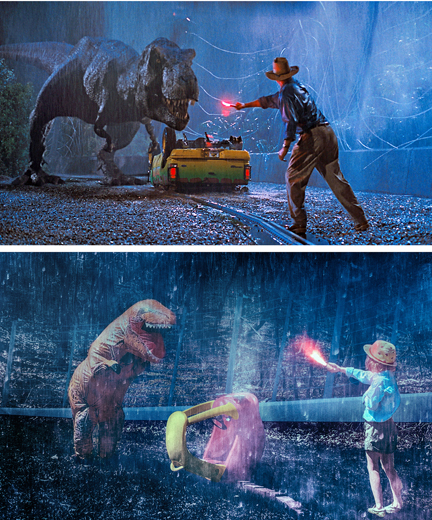 Do you have a favorite photo, and why?
Do you have a favorite photo, and why?
They are all like my children…forget that Reservoir Dogs. It’s the most fun to take some unsettling scene and completely deflate it will silly kid toys and props. Also that background crowd in Forrest Gump is a gallery of iconic toys – Poppy mixed with Boo from Monsters Inc. That cast totally justifies the multiple copy right infringement lawsuits it will likely cause.
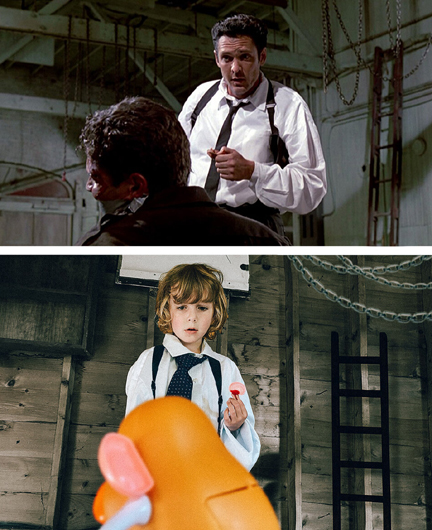 What movie is still proving to be elusive to your creative vision?
What movie is still proving to be elusive to your creative vision?
The Ghost pottery scene flipped out with some play doh. It’s my white whale.
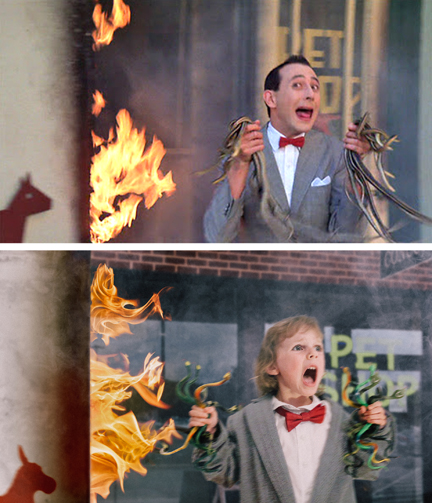 Does the stuffed fox co-starring in many of the images have a name and a story of his/her own?
Does the stuffed fox co-starring in many of the images have a name and a story of his/her own?
You know he is a fox! His name is Blue Ears White Dora. I don’t know where that name came from. He was a gift from a brother in law. I remember watching him lug that thing up our front steps and immediately cursing him. It was massive and I knew it would never be played with. For months it took up 1/2 of whatever room he was…he sat neglected but we started slipping him into photos and we realized how talented he was. Now he’s like my third child.

Is there anything Matilda would like to add to this interview?
How much are they paying us for this interview?
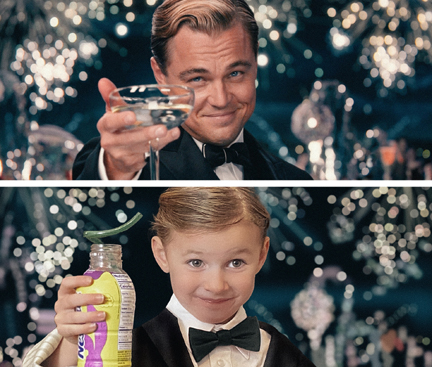
Images courtesy of Alex Zane

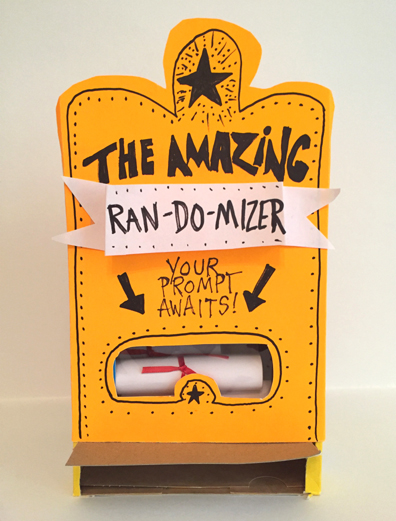
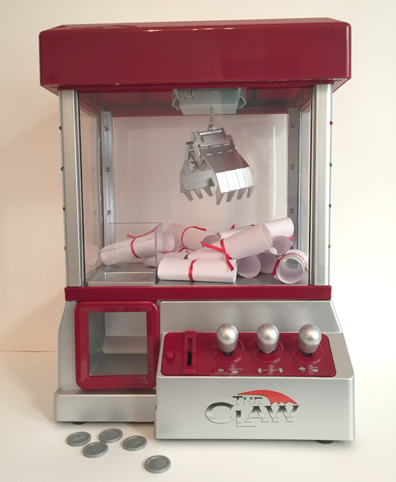
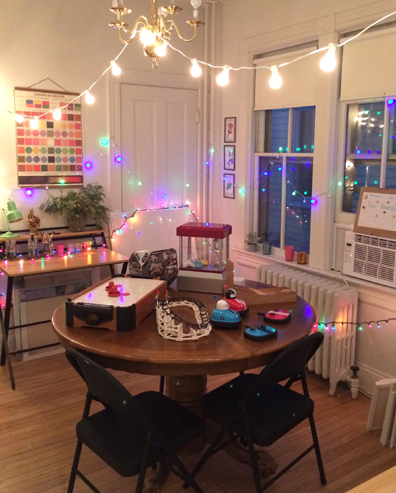
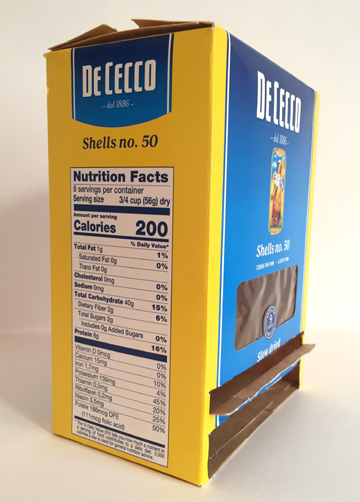
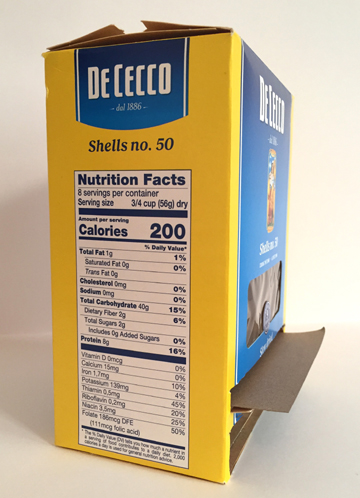
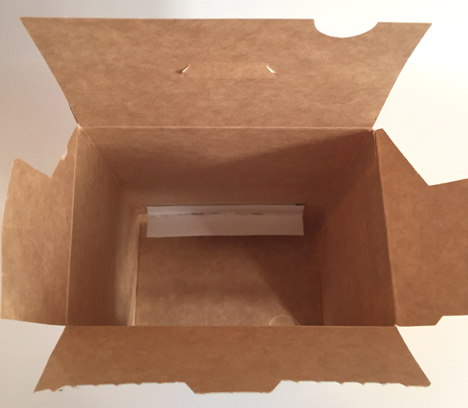
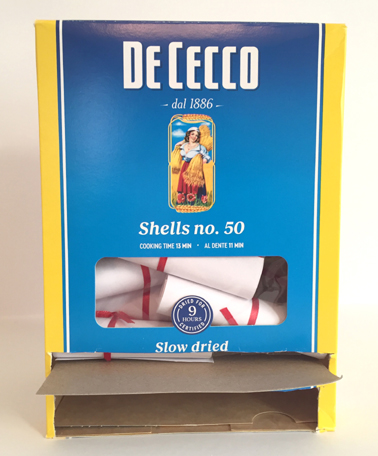
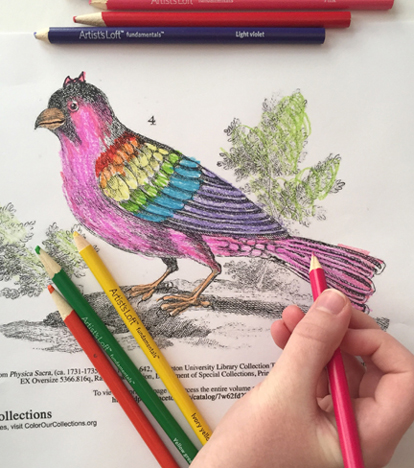 This week libraries, archives, and cultural institutions around the world are sharing free coloring sheets and books based on their amazing collections. Hosted by The New York Academy of Medicine, the
This week libraries, archives, and cultural institutions around the world are sharing free coloring sheets and books based on their amazing collections. Hosted by The New York Academy of Medicine, the 